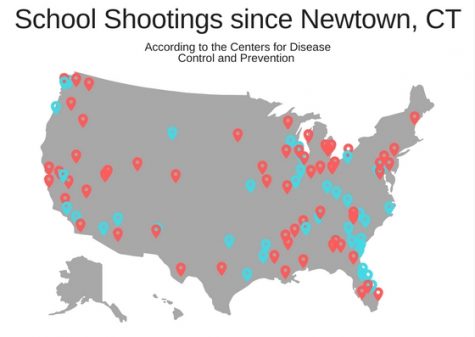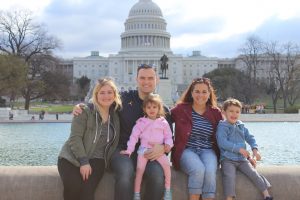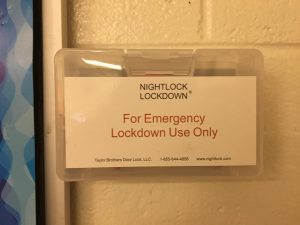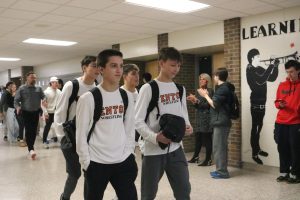New lock down procedure is different for foreign exchange students
November 16, 2017
Desks stacked up in front of doors. Dozens of students huddled in a corner, hugging their knees. The classroom is dark and no one makes a sound. After being taught how to practice lockdowns over and over again since kindergarten, this is a familiar scene for many students in the United States. But in many other countries around the world, students are not accustomed to such extensive kinds of practices.
“In Germany, at my school, we never once practiced a lockdown drill,” senior Lucy Muesch said. “We just had fire drills. We never even really talked about them, sometimes they would be mentioned at the beginning of year, but we never really thought ‘what if’. It’s really weird because here in the U.S., sometimes when we would be practicing those lockdowns I would actually be thinking about ‘what if this actually did happen’, where in Germany I never once had to ask myself that question.”
Compared to the United States, school killings and violence in other countries is rare. When the number of school killings in the United States is stacked up next to that of 36 other countries, the U.S. only has one less than the all of other countries combined. In fact, according to the Everytown for Gun Safety Organization, there have been a total of 253 school shootings in the U.S. since 2013.
“The goal, like any safety drill, is to practice responses to situations so everyone knows what to do in an emergency,” assistant principal Laura Lemke said. “The goal of these new lockdown drills is to not only incorporate new training but also to give teachers and classrooms various options based on whatever scenario takes place. It is meant to empower everyone to alter their decisions based on the information they are provided.”
 A survey conducted by the Government Accountability Office in March 2016 states that nearly two thirds of U.S. schools hold some form of “active-shooter” drills to teach kids and teachers how to react in the event that an armed intruder enters the school. One reason that these drills are held so frequently may be that more than 50 percent of parents with children in grades K-12 and 75 percent of secondary school students worry that a school shooting could occur in their community.
A survey conducted by the Government Accountability Office in March 2016 states that nearly two thirds of U.S. schools hold some form of “active-shooter” drills to teach kids and teachers how to react in the event that an armed intruder enters the school. One reason that these drills are held so frequently may be that more than 50 percent of parents with children in grades K-12 and 75 percent of secondary school students worry that a school shooting could occur in their community.
“When we did the first lockdown and all we did was barricade the doors and hide, I just thought it was really weird,” senior Kevin Pojer said. “But then we did the second one and it did scare me a little bit. When you hear them in the speakers saying that the shooter is coming toward you, it feels real and just really scary. I hope that never actually happens here.”
In light of recent events such as the shooting massacre in Las Vegas, many Americans have questioned the way that gun control has been handled in the United States. Many other countries around the world have put stricter gun laws in place, such as Germany, Finland, France, Italy, and Australia. Some students believe that these looser gun and weapon laws may be a reason for more extreme lockdown drills.
“In Italy, it’s really hard to get weapons,” senior Simona Barletta said. “So the probability of something like that happening there is really small. I think that the fact that we have to do these [lockdowns] in America shows that you have a problem with weapons here. I think that the problem is not the Americans themselves, because Americans are really nice, I think the problem is the weapons and the guns because they’re so easy to get.”
Many schools in the state of Michigan and around the U.S. have also started to implement stricter lockdown drills in response to the increasing amount of school shootings in recent years












